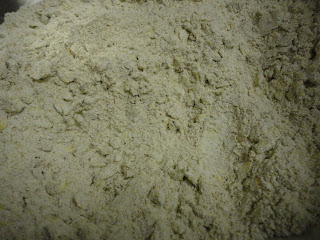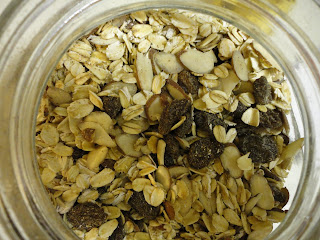It is the first time I've ever made up a baking recipe. I can make things up when it comes to cooking because there aren't any exact measurements. Baking is another story: it requires at least a little knowledge of one of my worst subjects, which is chemistry.
My parents were visiting and we went to the Swarthmore farmer's market. We're big breakfast people: we love eating breakfast out and making big breakfasts at home. We decided we wanted some muffins and found some beautiful blueberries at the market.
I have lots of cookbooks with lots of muffin recipes, but none of them looked that great to me. Plus, they all required baking powder. I have yet to restock my pantry completely, so I didn't have any. This lead me on an internet quest to see what I could use as a substitute. Once I started looking around, I decided I would piece together my own muffin recipe.
Notes: I beam with pride in telling you that these were yummy. I still kind of can't believe that my Frankenmuffins turned out so well. They were moist and flavorful.
These are not vegan, but I found lots of recipes for vegan muffins in my quest. As long as you have baking powder at your disposal and you get the amount and consistency of liquid right, I think you could make them dairy free pretty easily. For instance, you could add coconut milk instead of sour cream and more almond milk in the place of the butter. You could probably add applesauce instead of eggs.
My dad was my guest photographer for the finish photo (he reads the blog -- Hi, Dad!).
Ingredients:
2 cups of spelt flour
1 cup of sour cream
1 1/2 teaspoons baking soda
1/2 cup of almond milk
2 teaspoons vanilla
1/2 cup of brown sugar
4 tablespoons of melted butter
1 egg
1/4 teaspoon of cinnamon
1/4 teaspoon of nutmeg
1/4 teaspoon of kosher salt
1/2 pint of blueberries
Directions:
Preheat your oven to 350.
In one bowl, mix together your flour, salt, spices, and baking soda. Set aside.
In another bowl, add your melted butter and whisk in your brown sugar so that the sugar dissolves a bit (it will look thick-ish like molasses). Whisk in your egg. Stir in your almond milk, sour cream, and vanilla. Stir just until the mixture is smooth.
Add your dry ingredients to the wet mixture in thirds, mixing just to combine after each third (over-mixing makes for tough muffins). Finally, fold your blueberries into the batter.
Divide the batter into your muffin tin (I use the paper cups, it makes my life easier).
Bake at 350 for 18-20 minutes.
Serve them up for the breakfast-loving people in your life and enjoy!
 |
| Copyright to Dad Photography, Inc. |









































